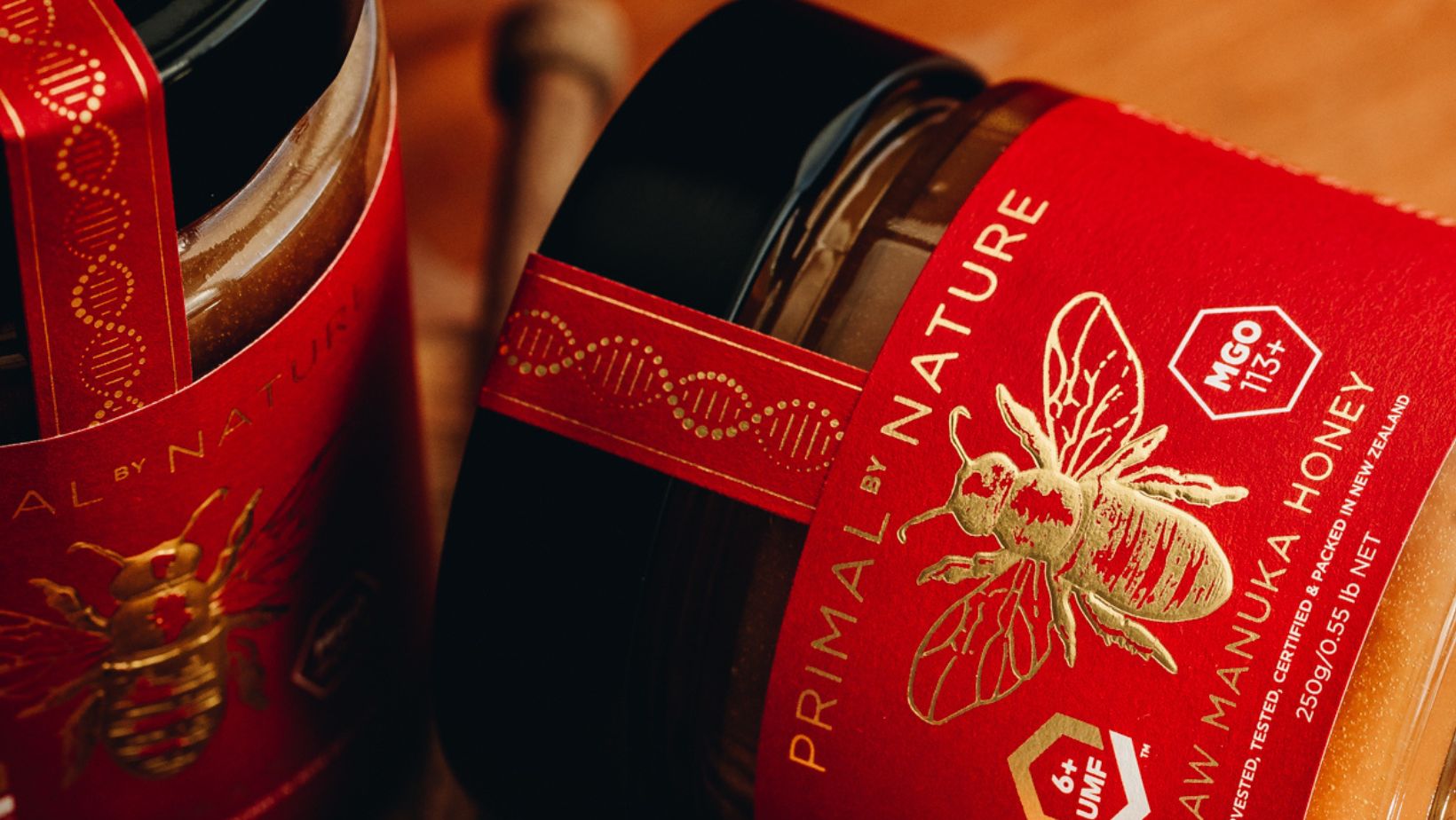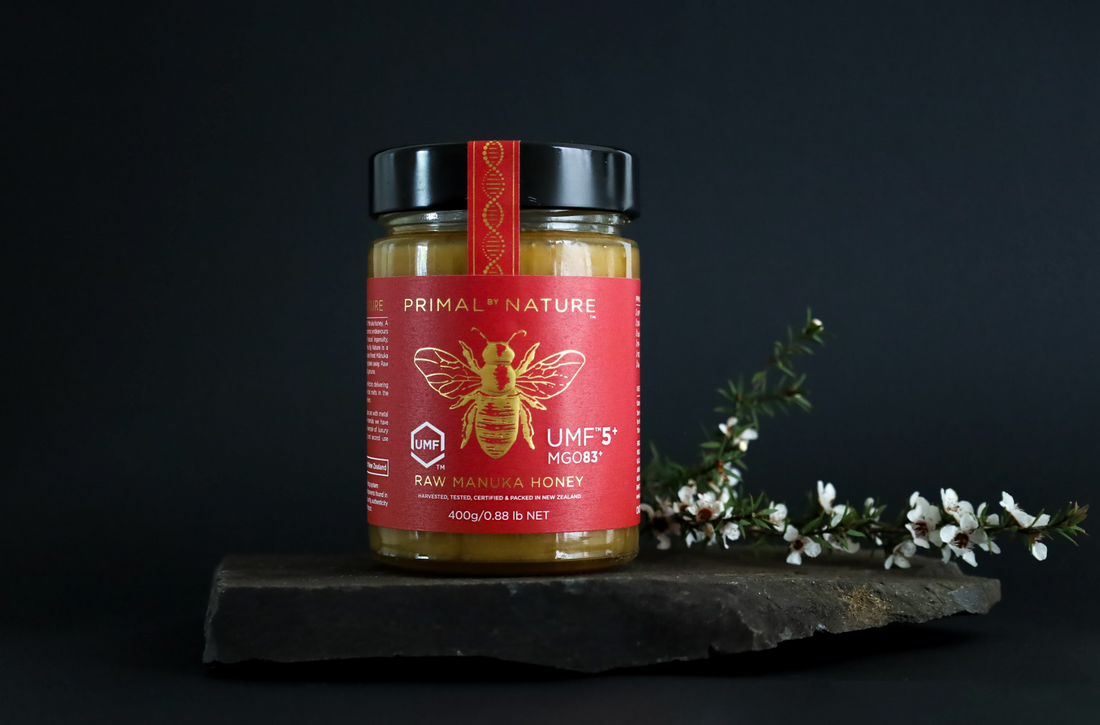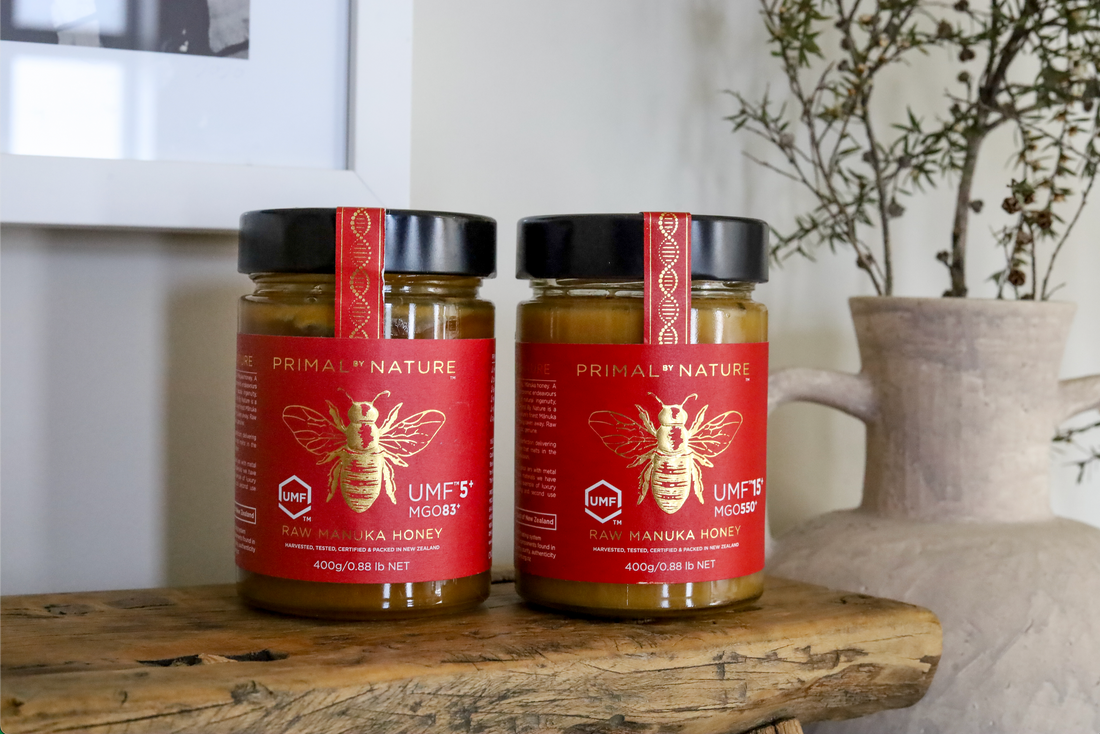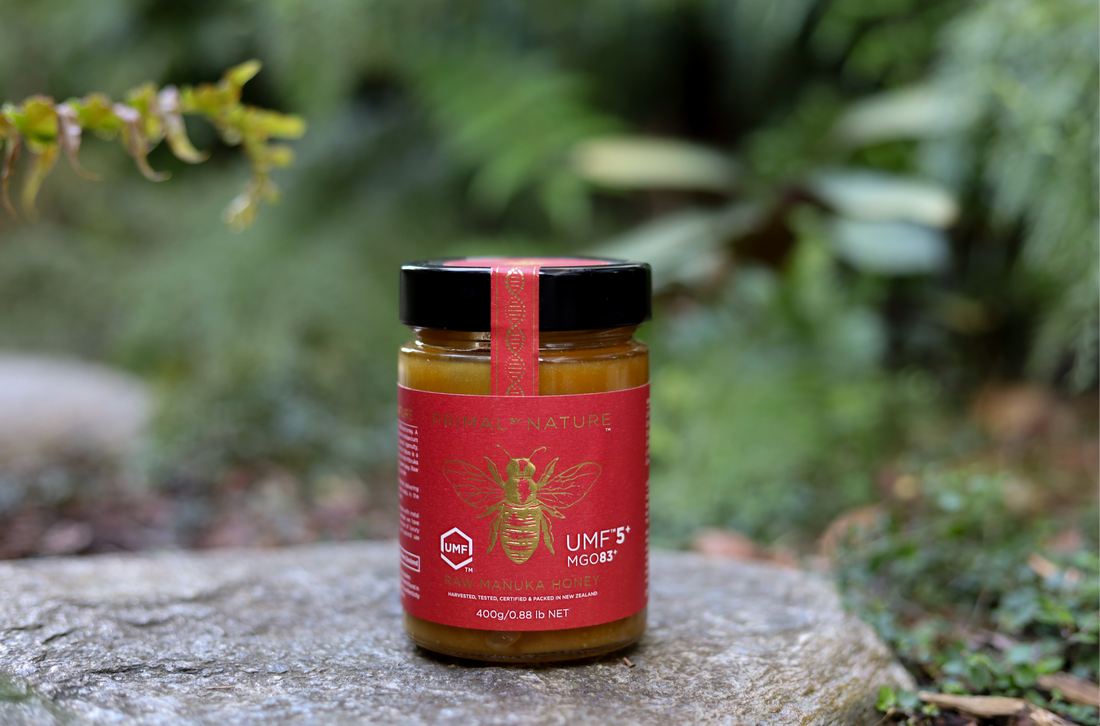Most people worldwide have heard about pure Mānuka honey in some capacity - its natural sweet gold has an unbeatable reputation. While many brands market their Mānuka honey as pure, the method by which they determine this can change depending on the brand.
While you’d think there is just one method to verify Mānuka honey, there are actually many ways to certify. However, certain customers will look for specific certifications depending on their needs. This blog will guide you through the four main certification methods and give you a unique insight into how each one works. We will also provide you with the gold-standard certification, which is coveted worldwide due to its extensive criteria.
Let’s get an understanding of the best way to measure monofloral Mānuka honey!
What is MGO in Mānuka Honey?
How Is MGO A Measurement of Mānuka Honey Purity?
MGO, or methylglyoxal, is an ingredient of Mānuka honey that is well-known within the industry. You may have heard this term once or twice, but this is the bioactive ingredient of Mānuka honey that represents potency. The strength of the Mānuka honey tends to be one of the driving factors that determine which jar our customers buy. At Primal by Nature, we currently offer MGO concentrations as low as 83mg/kg and as high as 1818+.
Why the intense interest? Several reports indicate that MGO may be linked to supposed antibacterial properties; however, these are in-vitro or artificial studies and have not yet been verified for real-world application. Nevertheless, MGO is highly credited for giving Mānuka honey its sharp rise in interest amongst fans of skincare and natural medicine. There has been a suggestion that Mānuka honey as a whole may contribute to soothing acne-prone skin, but again, there is still further research required before these claims can be validated.
For more information on MGO, please read - “What is MGO in Mānuka Honey?”
What Are The Drawbacks Of Only Looking At MGO?
While MGO is a desired ingredient, many people are not content with MGO alone. Why exactly? Shouldn’t this be all high-quality Mānuka honey needs? Not quite. Unfortunately, there are many opportunities for artificial MGO to be injected into batches. This is why Primal by Nature ensures to separate itself as a 100% pure New Zealand variety of Mānuka honey.
Are there better alternatives to measuring Mānuka honey purity? Probably. Not that MGO is not worthy of measurement - of course it is! MGO is the driver of potency in all Mānuka honey varieties regardless of the validation method. A majority of buyers will want to know the MGO concentration which is why every single product of Primal by Nature proudly showcases the MGO level on the label. Have a browse of our raw Mānuka honey selection to see for yourself!
What is K-Factor in Mānuka Honey?
How Is K-Factor A Measurement of Mānuka Honey Purity?
K-Factor is another measurement of gauging raw Mānuka honey’s purity. Unlike MGO measurement, K-Factor was created and used by just one company. This standard places importance on the pollen count within the honey but does not measure the potency.For more information, please visit - “Is Raw Mānuka Honey Different From Other Honey?”
MGO will typically not be showcased on K-Factor Mānuka honey. As a rule of thumb, K-Factor 12 represents multifloral Mānuka honey, and K-Factor 16 represents monofloral Mānuka honey.
While the pollen count is the primary means of determining the “grade”, there are also other aspects that are measured, including traceability, rawness, pasteurisation, GMO level, NZ-made, antibiotic levels, glyphosate, and pesticide levels. Typically speaking, K-Factor places five holistic pillars as a framework for determining their Mānuka honey purity:
- Traceability of hive to home
- Raw and unpasteurised
- Free of antibiotics, glyphosates, and pesticides
- Produced and packed in NZ
- Non-GMO
What Are The Drawbacks Of Only Looking At K Factor?
While it’s always exciting to see new takes on Mānuka honey verification methods, K-Factor does come with several factors that are concerning. Firstly, this method does not take into account MGO, which is arguably the most important factor of Mānuka honey.
The potency of this method is determined by the Mānuka pollen count. Additionally, it should be noted that several flowers share the same pollen as Mānuka, so there’s no DNA verification to ensure that this is 100% pure Mānuka honey. It’s possible that other species may have their pollen mixed in with the Mānuka pollen, thus making it multifloral.
What is MGS and BioActive in Mānuka Honey?
How Is MGS and BioActive A Measurement of Mānuka Honey Purity?
These two validation methods are not commonly seen but are still used among certain Mānuka honey brands. These methods are the Molan Gold Standard (MGS) and BioActive. Each of these methods includes the consideration of MGO in determining purity, which is a must-have for any brand. Even if you’re new to Mānuka honey, you should now be aware that MGO is the driving factor of potency for all varieties.
MGS measures both MGO and dihydroxyacetone (DHA) levels in Mānuka honey between 5+ and 30+, with the number corresponding to the suggested phenol strength. MGS requires a minimum concentration of
< 100 mg/kg to determine a grade. DHA is widely recognised for determining the shelf-life of Mānuka honey as it is the biochemical precursor to MGO. For as long as there is DHA present in the Mānuka honey, it will gradually convert to MGO and thus retain its unique potency.
On the other hand, there’s BioActive. This unique method measures both the peroxide and non-peroxide activity of the Mānuka honey sample.
BioActive looks at two unique aspects of activity:
- H202
- MGO
Hydrogen peroxide has been measured to be present in small traces within Mānuka honey but is different to MGO, which has been suggested to be the cause of non-peroxide activity within the honey.
What Are The Drawbacks Of Only Looking At MGS or BioActive?
While there are potential benefits when considering both of these methods, it’s important to always look at the big picture. MGS is an excellent method of gauging the potency and shelf-life of Mānuka honey, as it will give you an understanding of how strong the batch is. However, there are still several missing factors that one should consider when buying honey - for example, factors for authenticity and freshness. BioActive has several drawbacks, unfortunately, as it involves an unreliable method of measuring unique Mānuka honey activity. The activity from hydrogen peroxide is very short-lasting and difficult to measure before degrading, making any results potentially unreliable. Additionally, there are several factors not even considered, such as the DHA levels, authenticity and freshness. As a result, recent years have seen a decrease in the BioActive method of measuring Mānuka honey purity.
What is UMF™ in Mānuka Honey?
How Does UMF™ Determine Mānuka Honey Purity?
The Unique Mānuka Factor or UMF™ has been widely recognised as the gold standard for Mānuka honey purity verification. Established in 1998, this specialised method was created to focus on the most important factors that contribute to purity - UMF™ discovered that there were four of these factors. - Leptosperin - for authenticity
- Methylglyoxal (MGO) - for potency
- Dihydroxyacetone (DHA) - for shelf-life
- Hydroxymethylfurfural (HMF) - for freshness
As you can see, each one of these biochemicals is measured for a specific purpose. Each factor aids in strengthening the overall purity of Mānuka honey. All four contribute to the overall ”grade” or “score” that you may be familiar with. These grades range from UMF™ 5+ to UMF™ 32+, with higher-end UMF grades showcasing some of the rarest honey varieties in the world.
While each factor plays an instrumental role in determining purity, the MGO or potency factor is the biochemical that drives the higher-end UMF™ grades. Leptosperin, DHA and HMF are all expected to be present at a certain concentration and anything more than their respective level will not add any further value.
MGO, however, can begin at 80mg/kg and grow as high as 1818+mg/kg. As mentioned above, MGO is the most desired factor of Mānuka honey among buyers, and this is why. Potency or strength drives the value of Mānuka honey the same way carats drive the value of gold.
Why Is UMF™ Considered The Mānuka Honey Gold Standard?
Among the discussed certification methods, there is no doubt that UMF™ is the Mānuka honey gold standard. This is the only validation process that takes into account the aforementioned factors. While you may find standards that include MGO and DHA, the lack of leptosperin and HMF measurements mean that you don’t know if the honey is actually 100% Mānuka DNA or has been treated with heat.
Again, many across the globe don’t mind the other measured aspects of Mānuka honey and are only concerned by the level of MGO. While this is fine if you’re not concerned with the 100% pure New Zealand aspect of Mānuka honey. Harvested from some of the most remote locations, Primal by Nature prides itself on providing nothing but unadulterated, untouched and raw Manuka honey to our customers. Every single jar of our monofloral Manuka honey is UMF™ certified and available from UMF™ 5+ all of the way to UMF™ 32+ - widely considered to be one of the rarest honey varieties in the world.
Primal by Nature - Sustainably Providing 100% Pure New Zealand Mānuka Honey
Primal by Nature can deliver Mānuka honey from the rawest and most primal regions in some of the most remote New Zealand locations. We are your one-stop shop for a sustainable and natural solution. Our Mānuka honey comes in a range of UMF™ strengths.
All Primal by Nature Mānuka honey arrives at your door in recyclable glass jars regardless of the level of MGO or UMF™. We believe that our pure New Zealand Mānuka honey must be the best and should be available to consumers in the same eco-friendly packaging.
Primal by Nature eliminates the confusion surrounding Mānuka honey UMF™ grading systems and standards. As a result, you will be made aware of the different grades and be confident in buying a product that reflects an environmentally conscious brand.
Taking Mānuka honey to the next level, every Primal by Nature glass jar contains a potent primal burst of nature. To taste Mānuka honey of this stature is to embrace nature itself. So take a look at our extensive selection of Mānuka honey products and become one with nature.





